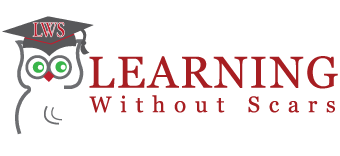The Challenge
We are getting close to being in a position of complete saturation in the jobs market. We now have more jobs open than we have workers looking for a job. That has not happened for a long time.
We now have over 6,000,000 jobs open across the country.
The most recent Gordon report, from Edward Gordon, one of our colleagues who focuses on training and education, said:
“Today is a watershed era similar to the Industrial Revolution of the late 19th and early 20th centuries. Then new methods of production required more educated workers. The factory system and the consequent growth of American cities sparked the development of public schooling at the local levels, that in turn led to the passing of compulsory schooling laws at the state level. The United States was the first nation in the world to institute compulsory tax-supported public education, and it was a key component in the economic and industrial expansion of the United States. It was history’s first comprehensive education-to employment system.
The spread of computer technology in today’s workplaces is again raising the demand for a more educated workforce. While there are some pockets of progress, too many Americans are not receiving the education needed for 21st-century jobs and careers. Our education-to-employment system clearly needs re-invention, but entrenched bureaucracies in business, education, and government stand in the way. Too many components of American society are caught in the blame game, instead of working together to find solutions.
There were deep divisions in American society one hundred years ago. Just as today, immigration and economic inequality stoked tensions. Yet as community after community discovered that the pain of defending the status quo was greater than that of systemic change, solutions were forged. I believe that we are at this point again. The United States was founded and still stands because of our belief in a better future for all. Americans have overcome formidable obstacles in the past. We can do it again!”
One of the keys here is the education to employment system. We are not satisfying the needs of our employers.
You have all read that I believe greatly in apprentice programs and mentorship programs as a means to get motivated people with good attitudes into the workforce. You also know that I am a huge fan of the German apprentice programs. Every year about half a million Germans enter the workforce through these apprenticeship programs. Apprenticeships are one of the foundations of Germany’s manufacturing prowess. Felix Raunier, a professor ate the University of Bremen, says even the US has started to notice. Raunier says “US society has stigmatized vocational education, so most parents see college as the only path to status and a good career for their children.” Ludger Deitmer, is international research coordinator at the Institute of Technology and Education at the University of Bremen. He thinks that vocational training should be one of the medicines, perhaps the key medicine, in how to make America Great Again.
Companies in the US are not completely on board to this approach. Apprentices, in Germany, earn income as they work in companies and go to school. There is a partnership between the schools and the employers.
Marilyn Hewson, Chairman, President and CEO of Lockheed Martin, recently testified “to a new and pressing challenge: the shortage of skilled workers to fill the jobs being created by robust growth.” One survey by Industry Week found that nearly 40% of the aerospace companies believe that the skills gap has had an “extreme” effect on their ability to innovate and grow.
Last year the administration created the apprenticeship Task Force and issued an executive order to identify and remove the bureaucratic and regulatory impediments to apprenticeships. Apprenticeships help workers train on a specific craft or skill that a company needs. Lockheed Martin is creating 8,000 apprenticeship and workforce development opportunities in the next five years.
Let’s bring this back to our Industry.
Should you employ a High School student on a part time basis, as they continue to go to school, so that they can learn what happens in your dealership and if they, and you, think there are opportunities. If there are then together, the apprentice and the company, can develop a plan. You can explore specific learning programs that local Junior Colleges and Vocational Schools offer. You can work with the schools to create new classes to fit your needs.
As Hewson says; “it is up to this generation of leaders in government, industry and across society to invest in and to develop a workforce equal to the global challenges ahead. It is now time to act across every sector to ensure that every worker has an opportunity to grow, achieve, improve, train and excel over the entirety of their careers – regardless of where they start, where they work, or how high they aspire to go.”
Should you have apprentices working in your parts department? Should you have apprentices in your service departments? Absolutely.
The Time is NOW.
